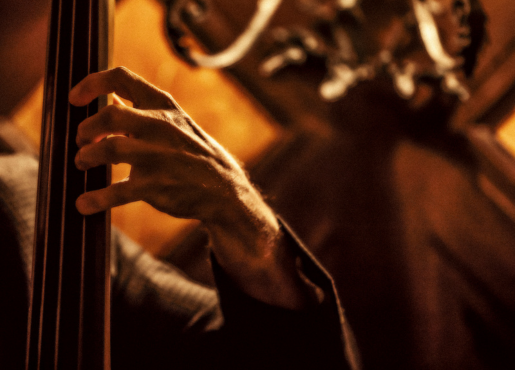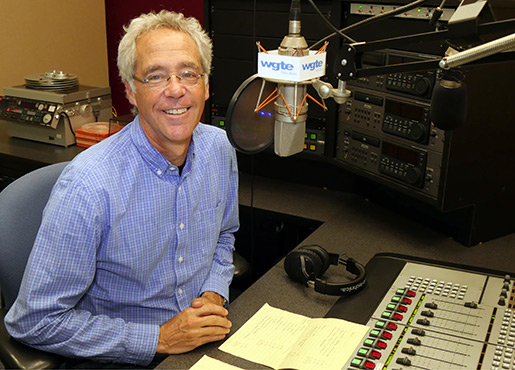
A Supreme Act of Love
By Fritz Byers
A few weeks ago, Kim Kleinman wrote, elucidatingly, about his struggle, not easy but ultimately successful, to pierce the often-overwhelming image of The Great John Coltrane and to hear Trane’s music – “as music,” in Kim’s characteristic phrasing. Kim’s right – that’s the best way to hear music.
But now we’re back at the shrine – the centerpiece of this week’s show is the Master’s A Love Supreme, the suite he recorded with his Classic Quartet in one inspired session on December 9, 1964. If, as Kim correctly posited, the mythology that surrounds Coltrane almost always compromises our ability to hear what he’s actually playing, this problem likely reaches its apex when we encounter A Love Supreme.
The sources of this elevation are easy to identify:
- the music is highly accessible, representing a final grand statement of Coltrane’s conventional chordal and modal conceits before his departure into the often grating and discordant approaches that marked his controversial last years (of which there would be only three);
- it presents the quintessential distillation of the improvisational methods of the Quartet: the pianist McCoy Tyner’s muscular, slightly dissonant chording; the bassist Jimmy Garrison’s precise, liquid bass lines; and the drummer Elvin Jones’s free-for-all percussion, the rhythms of an enraptured dervish;
- the cover photo of Trane in a somber, questing mood; and
- John’s own liner notes (I believe the first and last time he ever wrote about his own music), consisting of a “Dear Listener” note that begins with an unmistakably devout dedication and sustains that spiritual quality for nearly five hundred words. The letter is accompanied by a frankly religious poem that shares its title with the album.

So Trane left no doubt that his ambitions for the recording were grand. I struggle to think of an artist who more successfully achieved a similarly monumental ambition. At the same time, he was characteristically humble about the process that produced this masterwork.
In August 1964, his son John Jr. was born, and John and Alice retreated to their newly purchased home in Dix Hills on Long Island. Having concluded a long stint on the road shortly before the birth, John was ready to rest. But soon his muse called to him, and, as he did so often in his career, he quarantined himself in an upstairs room to pay attention. As Alice would say, he was “spending his time pondering over the music he heard within himself.”
He emerged from this isolation after four or five days with a peaceful aura that Alice likened to “Moses coming down from the mountain, it was so beautiful.” John would describe the feeling with a quiet, reverent mysticism:
“This is the first time that I have received all of the music for what I want to record, in a suite. This is the first time I have everything, everything ready.”
Everything? Yep.
The melody lines of A Love Surpeme are as simple as can be. Either child’s play or endlessly engaging koans, take your pick. Regardless, they provide plenty of fodder for 33 minutes of ceaseless creativity. Layered over the melody line are all the elements that make Coltrane’s music so enduring: the muted-but-suggestive open-endedness of Coltrane’s sophisticated modal digressions; the hints of non-Western scales that embue Eastern folk music; the freedom that comes from being liberated from chordal patterns; the blues-drenched tonality of Coltrane’s unmistakable sound and improvisional style; and the polyrhythms that no one except Elvin Jones could even have conceived.
I’ve written elsewhere about the tautological aspect of finding spiritual meaning in music. To be sure, A Love Supreme has produced thousands and thousands of statements by Coltrane devotees about the religious qualities of the music, and the sense of soul-peace it can bring. But musical meaning and spiritual truth are both concepts that are far too personal to allow any definitive statements in those realms. As a nice antidote, the drummer Elvin Jones, when asked to comment on A Love Supreme’s qualities, said, “Music. That’s what I call it.”
Suffice to say that I know almost no one who has listened to A Love Supreme who has failed to find in the music something deeply nourishing.
Four movements. A single masterpiece.
I hope you enjoy the show.
- Home
- Schedules
- TV
- TV
- Local TV Programs
- Business | Life 360 with Kristi K.
- Toledo Stories
- To The Point with Doni Miller
- Listening with Keith Burris
- Ideas & Insights
- WGTE Presents
- BL360: Northwest Ohio Innovation Consortium
- Magic of the Old West End
- Freedom Means Never Surrender
- I&I: The Random Factor
- FF: National Cherry Festival
- TTP: Moms Demand Action For Gun Sense in America
- Watch Live
- Radio
- Education
- Community
- Support
- About
- Donate



